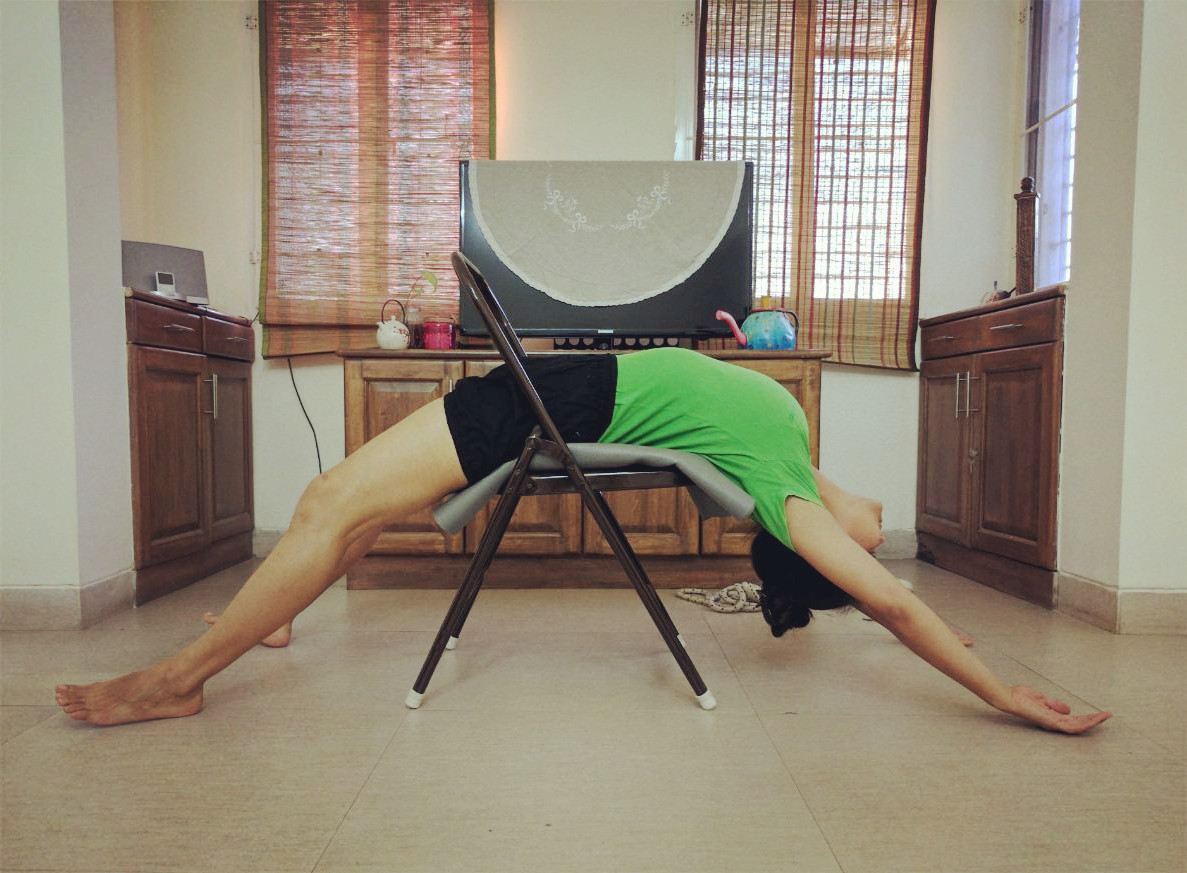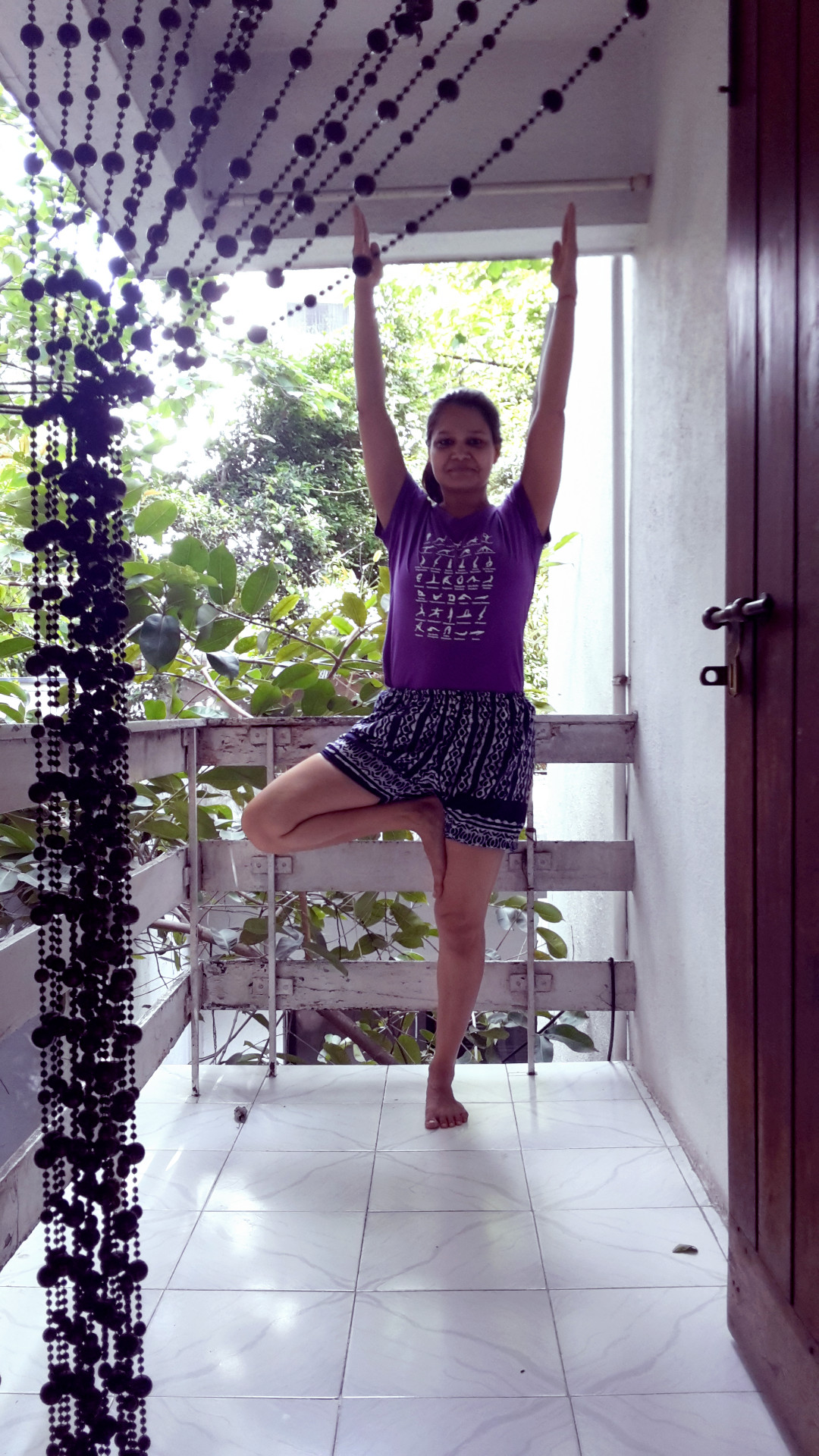
I love the basics. Even though advanced yoga poses can be exciting, there is still something lovely about the simplicity of the basics. Basic asanas are like the comfort food of yoga.
My schedule has changed a little bit for this month, so I now have Devki’s class on Wednesdays from 7.45-9 am.
In today’s class we focused on the groin. I’ve been here for a month and so far I haven’t done a blog on any class I’ve attended, but today’s class was different from any so far. We focused on the spine and the root of the spine (moola). We were supposed to grip the spine and the root throughout the sequence. We started with the Swastikasana and went on to the Baddhakonasana.
The class had a pleasant tempo. It didn’t feel like I was struggling in the asanas and pushing my limits. Yet, as the class progressed I could clearly feel that I was settling into the asanas rather than fighting my way into them. As though my limbs were moulding and unfolding effortlessly. I feel I was discovering what the body can do when the mind is quiet and the ego recedes. By the time we got to the Trikonasana I felt light and lithe and it was the best Trikonasana I’ve done while here in Pune.
I always learn something new in Devki’s class. And it’s always something fascinating.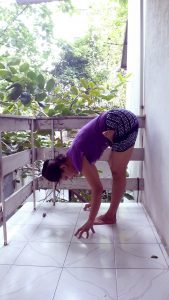 The Vrkshasana/Tree Pose is perhaps the first balancing posture that we learn in yoga class. Over the years I’ve heard a lot about the symbolism associated with this pose. The more common ones are to be rooted and strong and to find balance despite what is happening around you. But today Devki said be like a tree and provide shade and protection to all that come to you. A tree doesn’t judge a good person or bad, an animal or a human. It provides shade, protection and relief to one and all.
The Vrkshasana/Tree Pose is perhaps the first balancing posture that we learn in yoga class. Over the years I’ve heard a lot about the symbolism associated with this pose. The more common ones are to be rooted and strong and to find balance despite what is happening around you. But today Devki said be like a tree and provide shade and protection to all that come to you. A tree doesn’t judge a good person or bad, an animal or a human. It provides shade, protection and relief to one and all.
Although as human beings we are constantly evolving and growing (as we should), we can also be like the tree and ensure that external factors don’t diminish our light or detract us from the work that we are meant to do. We should be compassionate towards all who we come in contact with and see the larger picture even in the midst of the most sticky situations. The tree that provides protection is larger than those that come to it for relief and has a greater purpose. Think about this when practicing your Vrkshasana next time.
Towards the end of the class we went into Baddhakonasana once again and performed it like the Savasana – with the intent of relaxing the body. I couldn’t help but smile when I realized my spine, the root (moola) of the spine and the posture had all come together effortlessly in the Baddhakonasana.
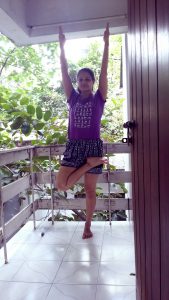
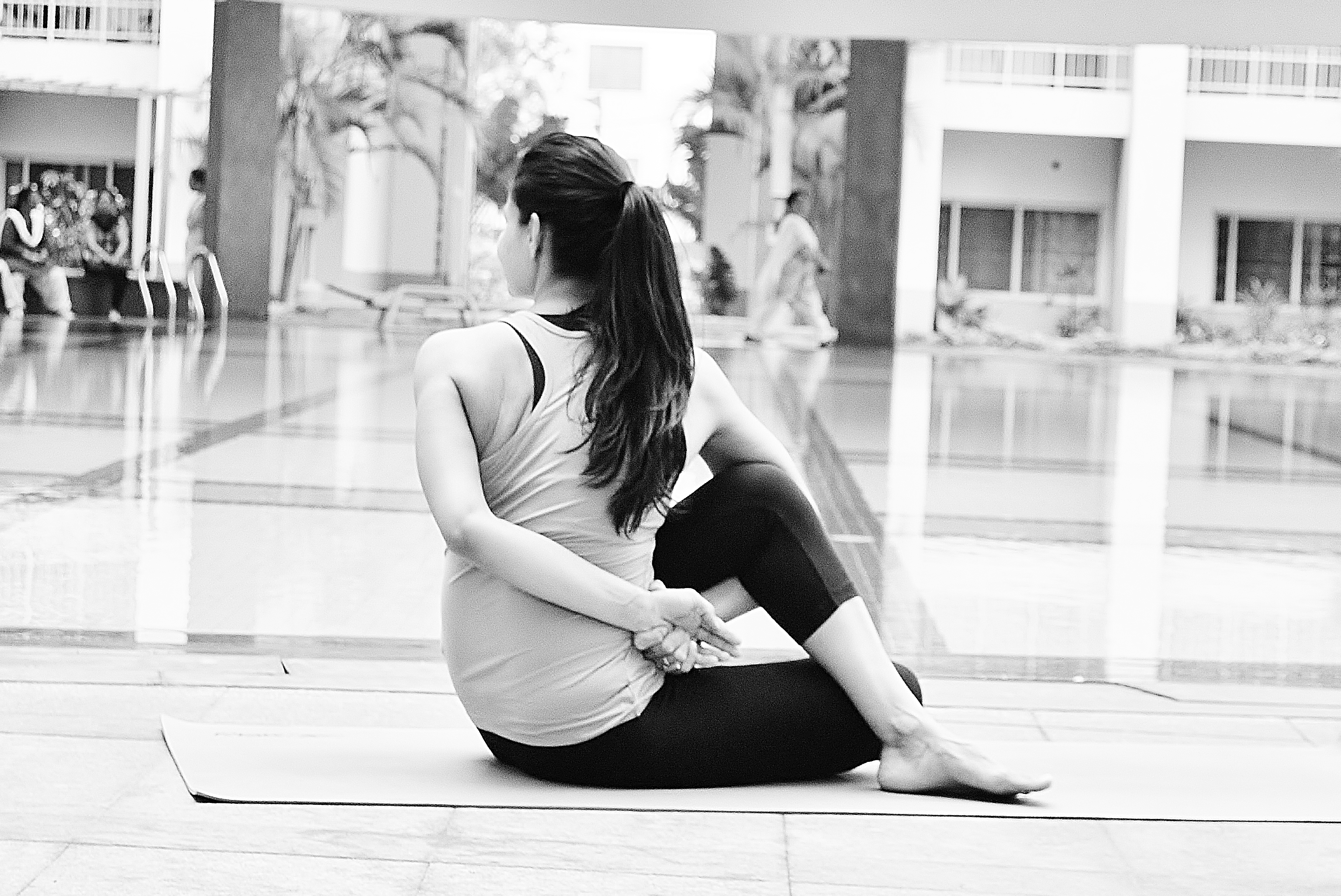
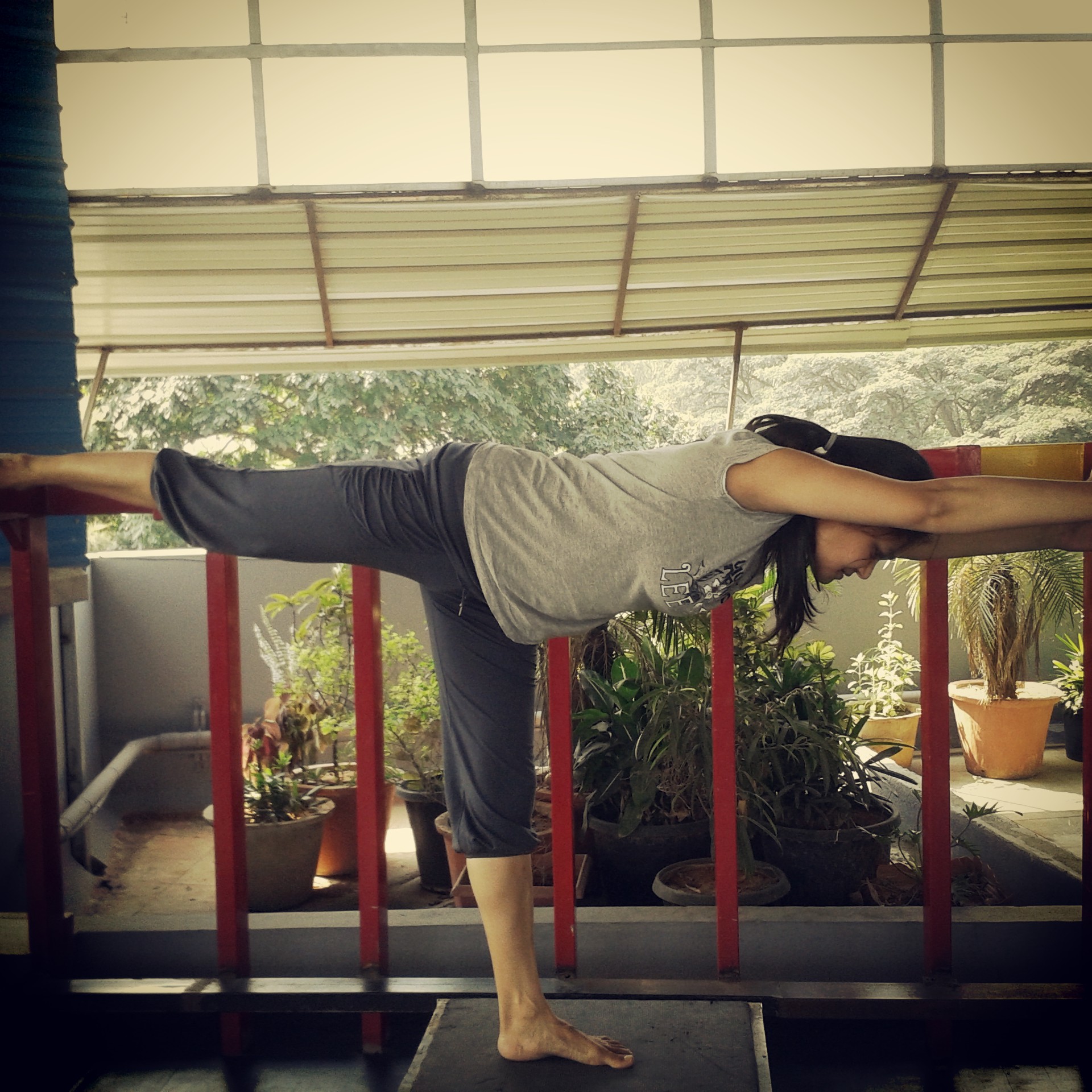
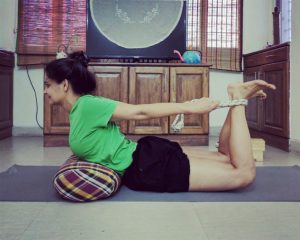
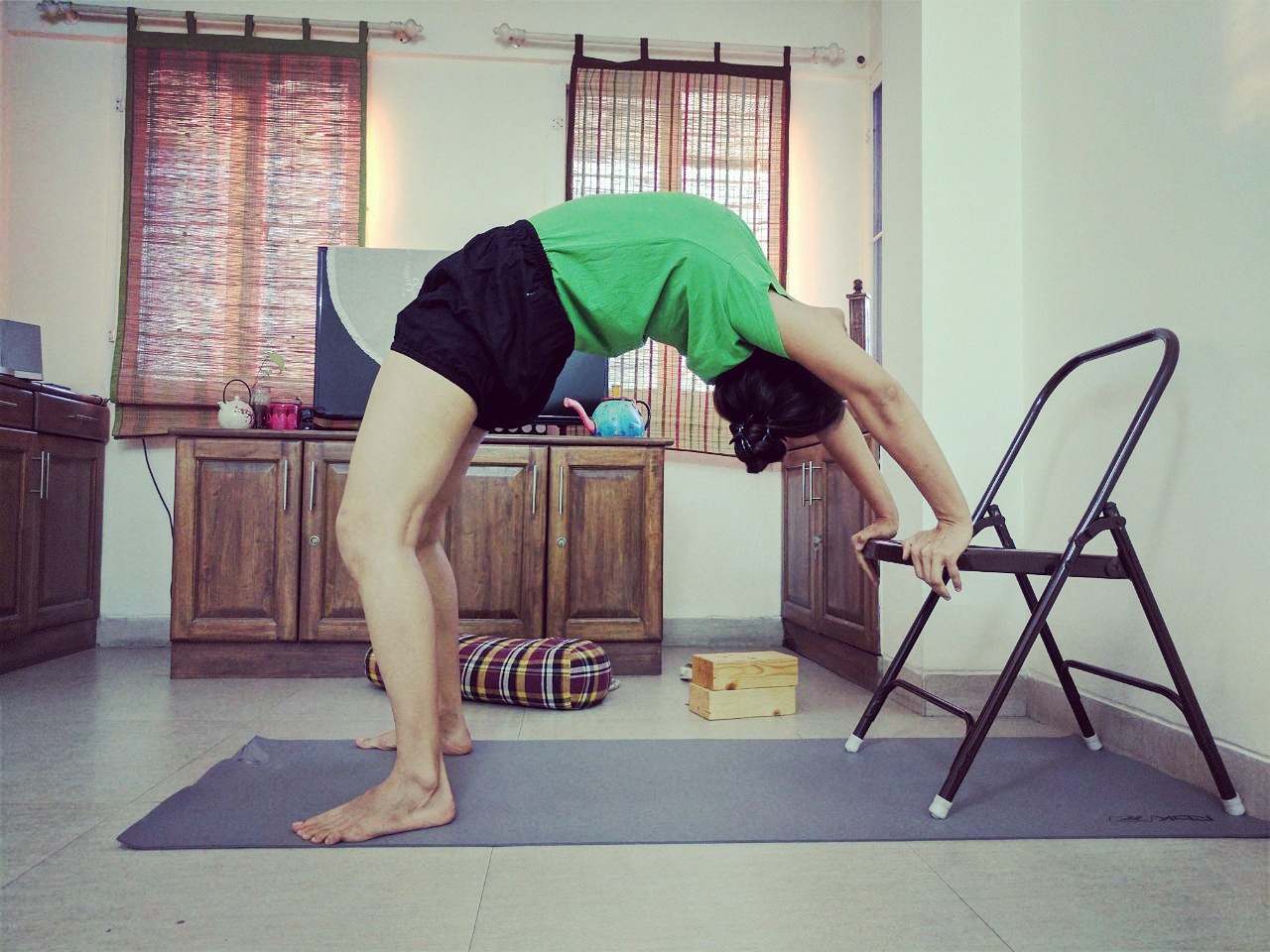 amount of water you put into it won’t stay in it. Similarly our bodies have to be ready for Pranayama for it to be effective and not harm us. Devki said that many times students ask her why we aren’t doing seated pranayama. The reason is that most of us aren’t able to maintain a straight spine throughout the practice. With a crooked spine the breath is constricted and the organs of breath are uncomfortable. (BKS Iyengar has said: Crooked body crooked mind.) The organs of breath need to be disciplined before we can start to control the breath. For this reason we spend almost 90% of the class in a supine position using bolsters and blankets.
amount of water you put into it won’t stay in it. Similarly our bodies have to be ready for Pranayama for it to be effective and not harm us. Devki said that many times students ask her why we aren’t doing seated pranayama. The reason is that most of us aren’t able to maintain a straight spine throughout the practice. With a crooked spine the breath is constricted and the organs of breath are uncomfortable. (BKS Iyengar has said: Crooked body crooked mind.) The organs of breath need to be disciplined before we can start to control the breath. For this reason we spend almost 90% of the class in a supine position using bolsters and blankets.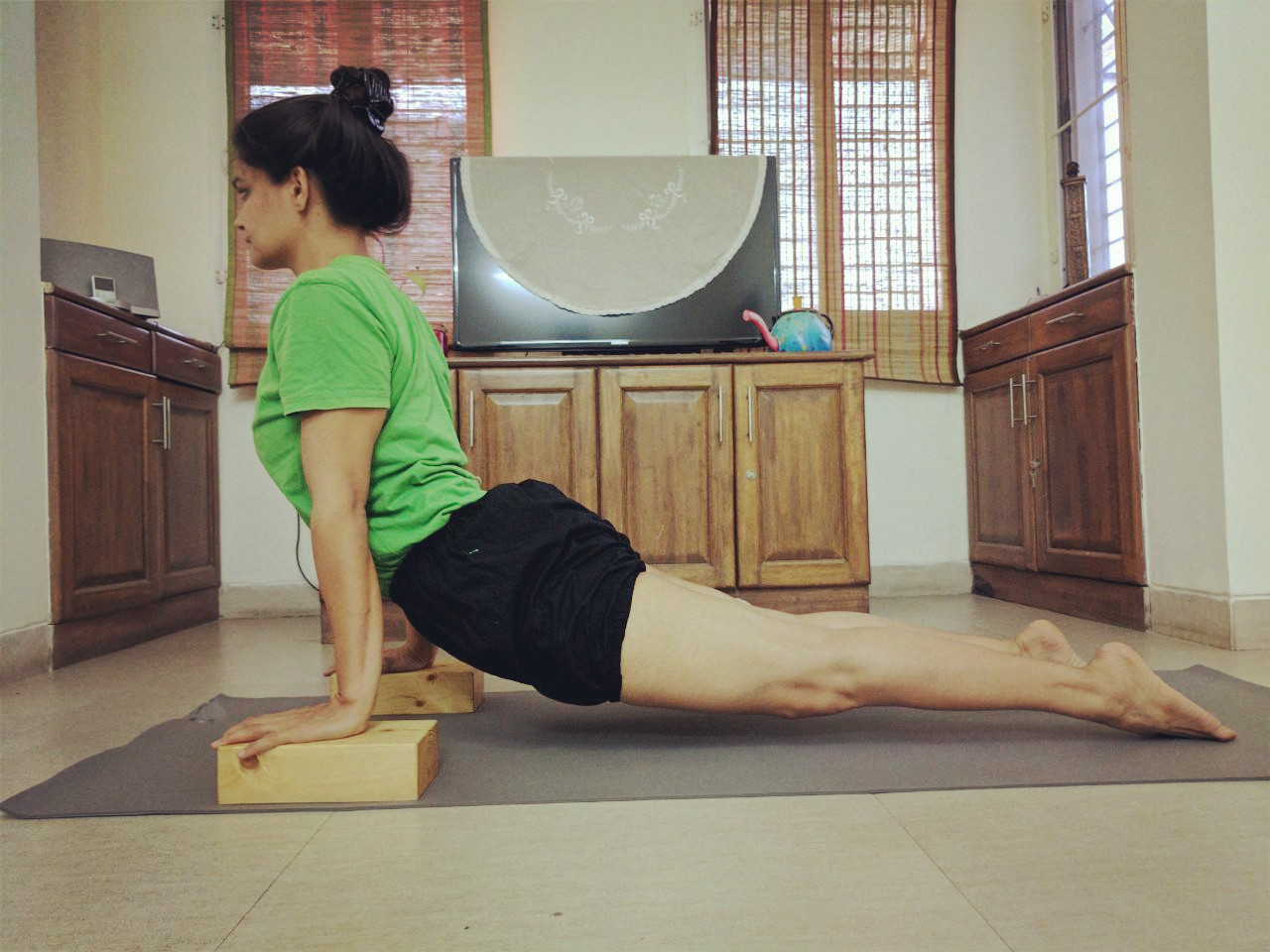 As we are settled in our positions with bolsters and blankets, Devki talks us through what we are doing and the importance of it. In yesterday’s class she said something relevant to what I wrote about in my
As we are settled in our positions with bolsters and blankets, Devki talks us through what we are doing and the importance of it. In yesterday’s class she said something relevant to what I wrote about in my 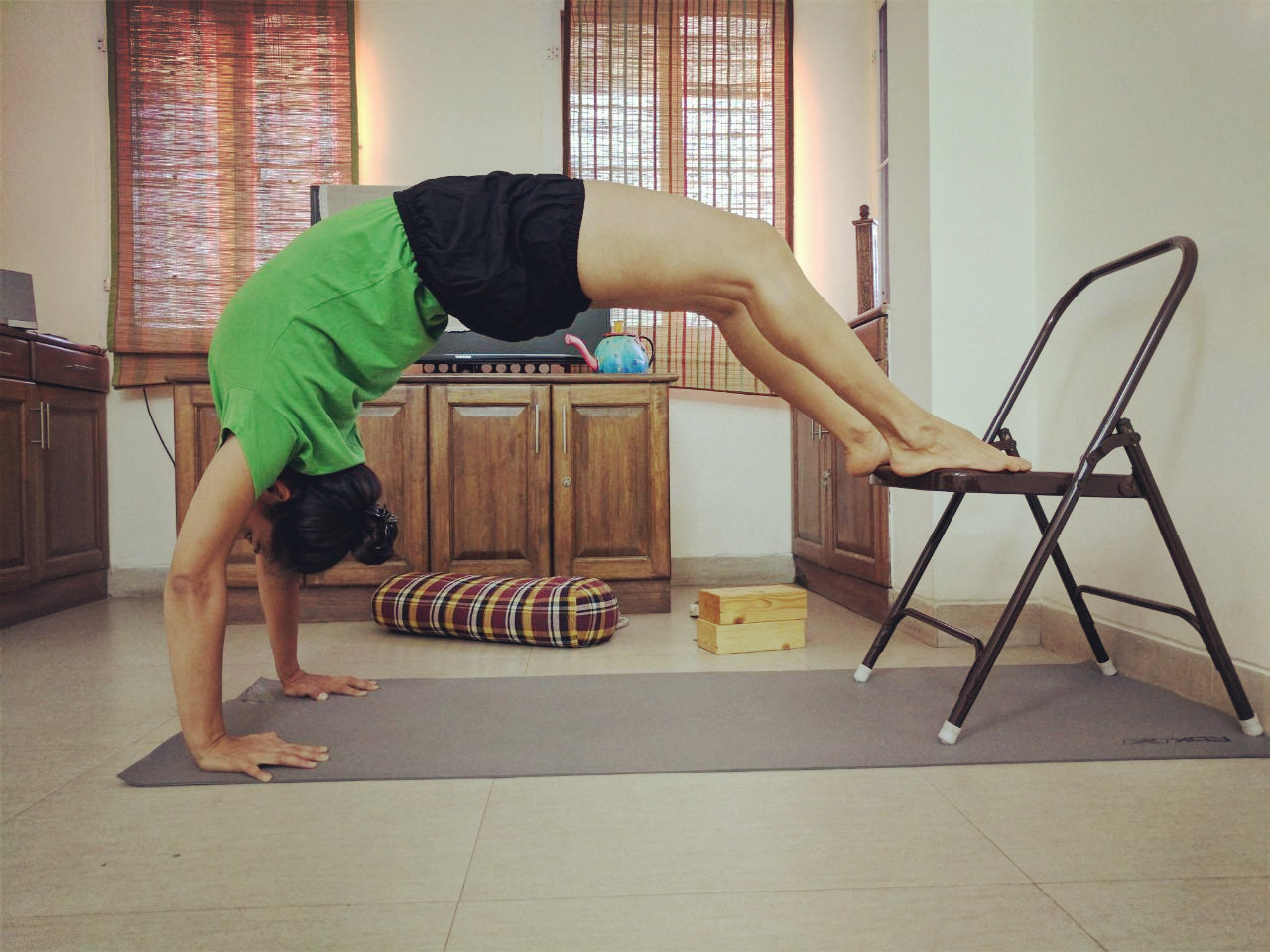 the chest, we allow a metaphorical ‘airing out’ of stale and painful emotions. Everything that happens to us results in shaping our world view and behaviour. Sometimes what happens to us is painful and unfair. Unfortunately, these events make an imprint in our minds and effect our behaviour. We sometimes never let go of painful memories and they fester in our subconscious brain and almost always result in psychosomatic pain.
the chest, we allow a metaphorical ‘airing out’ of stale and painful emotions. Everything that happens to us results in shaping our world view and behaviour. Sometimes what happens to us is painful and unfair. Unfortunately, these events make an imprint in our minds and effect our behaviour. We sometimes never let go of painful memories and they fester in our subconscious brain and almost always result in psychosomatic pain.